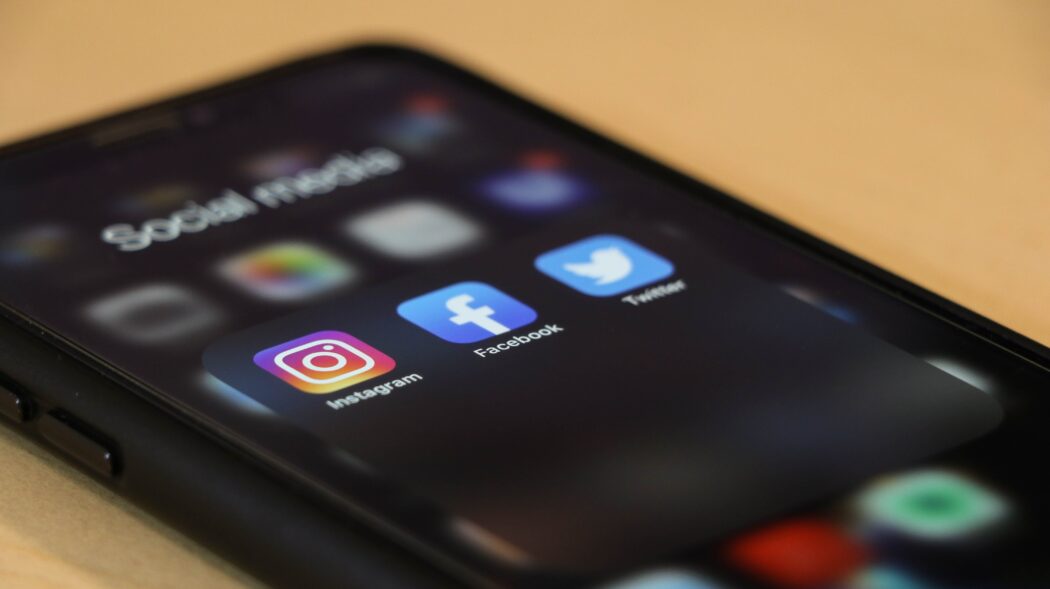Two years ago, when the pandemic hit and forced billions into isolation, social media usage exploded. At first these applications spread funny animal videos and dances, but after a few short months the content shifted drastically. The Black Lives Matter Movement in the United States can be considered the first notable evidence of this change. Social media was used as a platform for the Black Lives Matter movement to expose and protest against corrupt and racist institutions. Viral videos exposing racial injustice sparked protests from supporters across the globe. Two years later, these platforms are still used to disseminate information and demonstrate support toward righting various injustices. Infographics, donation sites, and personal anecdotes are posted to spread awareness and rally supporters. However, what began as a beautiful expression of solidarity eventually led to the harmful glamourization of activism, resulting in performative posts without genuine support.
Social media has regularly been praised for its success as an activist platform, allowing information about important topics to be shared globally. Just two months ago, viral posts opened the eyes of the world to the story of Mahsa Amini, who fell victim to the oppressive Iranian regime. However, while we can recognize the power these applications have in providing a platform, there are also serious issues that arise from the widespread nature of online activism. While some benefit from increased information of important social movements and a greater perspective into global issues, the rise in social media activism has also created pressures on users to speak on these trending movements.
…what began as a beautiful expression of solidarity eventually led to the harmful glamourization of activism, resulting in performative posts without genuine support.
These applications determined that the “acceptable” way of engaging with a social issue is publicly. Those who don’t speak on, post about, or use hashtags created for popular movements are criticized and accused of being unsupportive. As a generation focused on public image and outward appearances, failing to abide by these expectations can be very destructive. This enforces the idea that active and public engagement demonstrates the level of support someone has for a cause. But beyond this public facade, there are no other requirements for supporting a movement, according to the masses. Consequently, most of the support offered to these movements is very shallow and performative — people rally for causes to improve their social standing rather than out of genuine concern. People only want to appear engaged and therefore do very little to actually aid these movements.
…people rally for causes to improve their social standing rather than out of genuine concern.
This growing popularity of performative activism is further exacerbated by social media ‘cancel culture,’ which pressures people to advocate for movements to avoid appearing ignorant and unsupportive. This is especially significant for more popular users, such as celebrities, influencers, and businesses who risk losing their clients if they don’t support a trending cause. Performative activism becomes the standard, as ‘appearing’ supportive becomes far more important to one’s social standing than making genuine efforts to help.
Another element of social media that damages substantial forms of activism is trends. When a specific movement gains momentum online, everyone who doesn’t want to risk appearing uncaring must jump on the bandwagon. However, because their engagement is nothing but performative, when these movements lose traction —inevitable due to the dynamic nature of social media platforms— these shallow and ingenuine forms of support will disappear and most of the attention towards the cause will fade, even though the problematic infrastructures remain. We have seen this over the past few years, with movements such has #BLM, #StopAsianHate, and #FreePalestine, all gaining massive popularity for a couple months, and then losing momentum without any real change being made. ‘Supporters’ forget all about the movements at hand and move onto the next social justice issue that will allow them to maintain their ‘woke’ and sympathetic facade. Trends can also actively harm movements. This was seen during the #blackouttuesday trend, which encouraged supporters of BLM to post a black square to protest racism. However, the consequences of thousands of social media users posted black squares under the black lives matter hashtag was not considered. Rather than successfully protesting against racial injustice, valuable resources that were shared under the same hashtag were essentially pushed down and “blacked out,” obscuring information being shared about the racial issues.
Posting on social issues often provides people with false comfort in thinking they are helping an issue. However, the reality is that there needs to be a greater effort made to fix these social problems.
Most people fail to consider the consequences of performative activism and don’t realize how it can prevent active efforts to ensure the success of movements. Posting on social issues often provides people with false comfort in thinking they are helping an issue. However, the reality is that there needs to be a greater effort made to fix these social problems. But very rarely do the masses that publicly appear to support these movements go out and protest, or spend time and money to help the affected communities.
While social media is an amazing method for activism that helps facilitate the spread of information, it isn’t enough to truly help those who are suffering. Direct action needs to be taken to help these movements. Posting about climate change does not equate to planting trees, protesting, and boycotting environmentally unsustainable products or companies. When posting, it is important for us to ask ourselves: are we doing this for the cause or for our own image? Posting to gain social capital without genuine care is not only performative and unproductive, but can also be actively detrimental to the cause. Social media is a powerful platform for activism when used correctly –– so keep posting, but don’t stop there.








